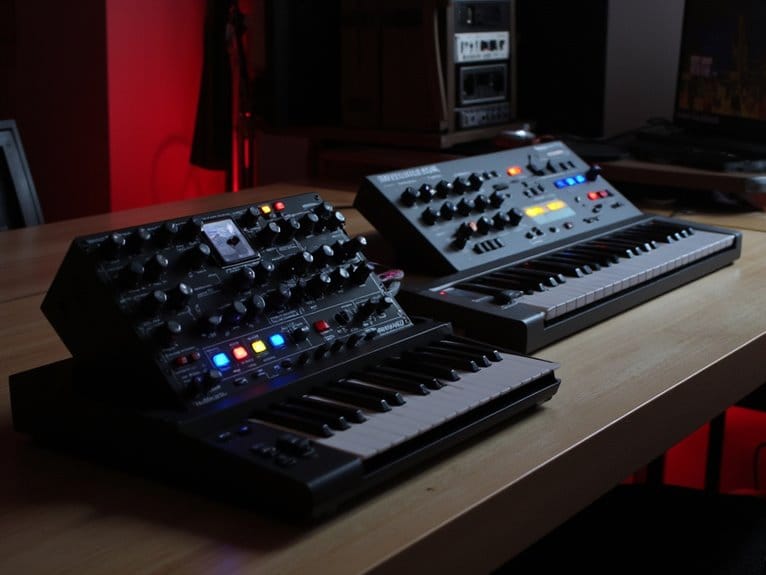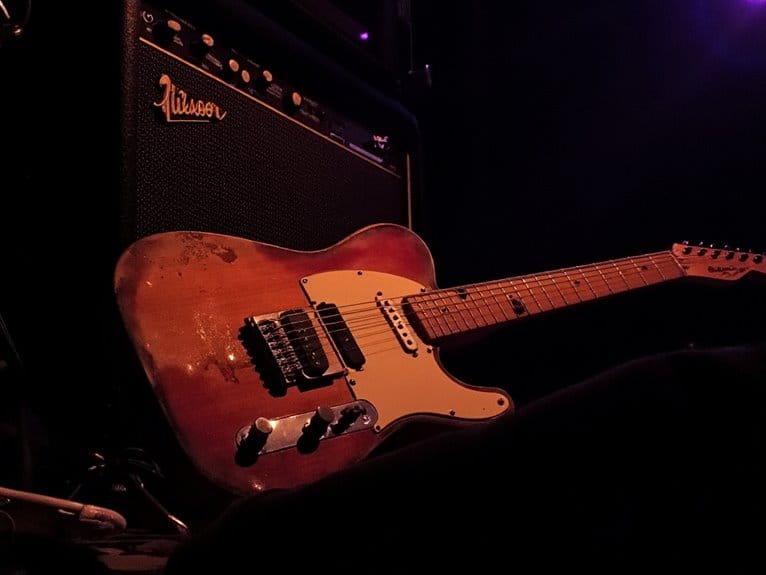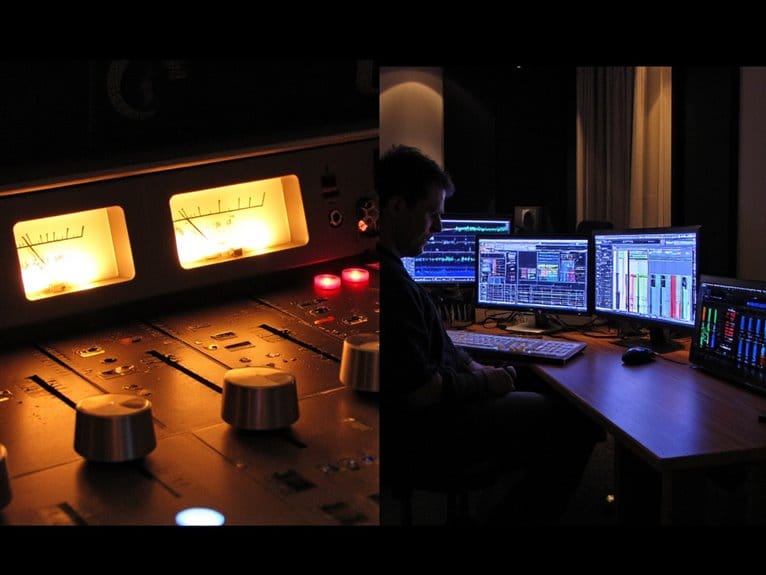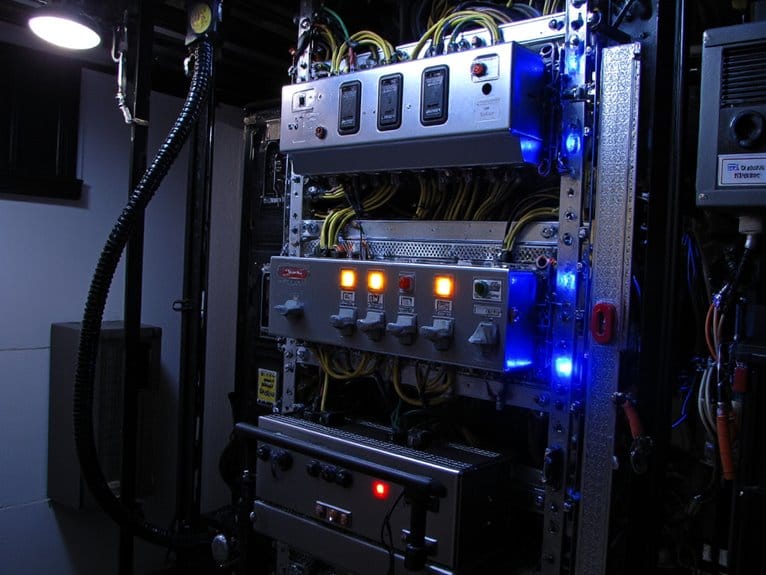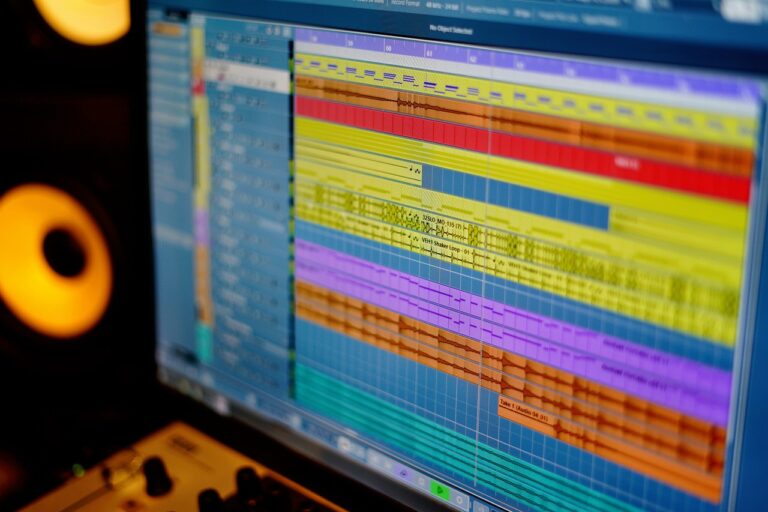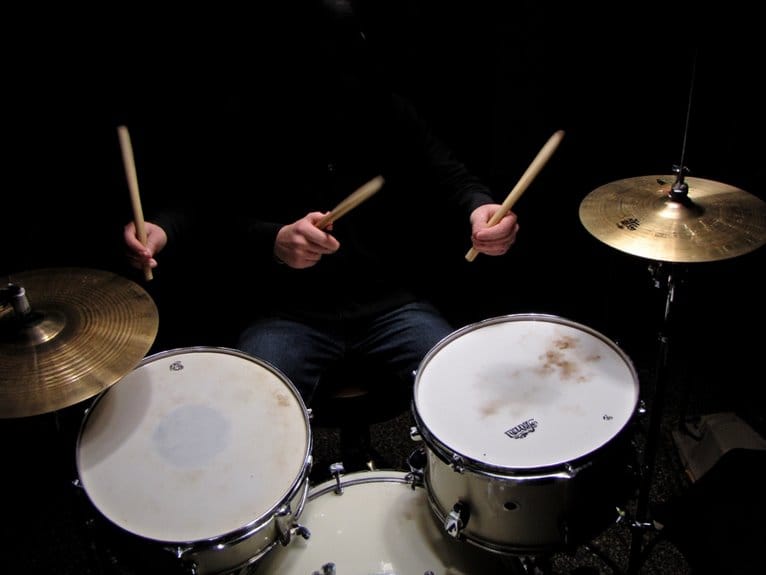Desktop Vs Keyboard Synthesizers: Choosing the Right Format
You’ll choose desktop synthesizers if you’re prioritizing desk space, deeper sound programming, and better value per dollar, since they pack identical sound engines into compact modules with extensive control layouts. Keyboard synths excel when you need integrated performance features like velocity sensitivity, aftertouch, and pitch wheels for live playing or expressive studio work, though they’ll cost more and demand additional workspace. Your decision ultimately depends on whether you’re focusing on sound design or performance, and understanding the specific trade-offs will help you invest wisely.
We are supported by our audience. When you purchase through links on our site, we may earn an affiliate commission, at no extra cost for you. Learn more.
Notable Insights
- Desktop synthesizers save space and offer better value, while keyboard models provide integrated performance controls at higher prices.
- Both formats contain similar sound engines, but desktop units emphasize deep programming while keyboards prioritize live performance workflows.
- Desktop synths feature larger screens and extensive controls for sound design; keyboards offer velocity sensitivity and real-time expression.
- Desktop modules excel in studio environments with CV/Gate connectivity; keyboards provide streamlined USB integration for immediate playability.
- Choose desktop for studio production and space efficiency; select keyboard format for live performance and tactile musical expression.
Form Factor and Portability Considerations
When you’re deciding between a desktop synthesizer and a keyboard synth, the form factor becomes one of the most critical considerations that’ll shape your entire music-making experience.
Desktop modules excel in conserving precious desk space, leaving room for your mouse, audio interface, and other essential gear, while keyboard synths demand markedly more real estate on your workspace.
Desktop synths maximize your studio’s breathing room while keyboard versions devour workspace like hungry monsters.
The portability trade offs become apparent when you’re hauling gear to gigs—desktop units and 49-key models slip easily into backpacks, but larger keyboards require dedicated cases and more physical effort.
Synthesizers typically feature lightweight synth-action keys, making transport manageable, whereas keyboards with semi-weighted or fully-weighted actions add considerable bulk that’ll test your commitment to authentic piano feel. Many keyboard synthesizers provide familiar interfaces that make them accessible to both amateur and professional musicians. Full-sized 88-key models present the greatest transport challenge, as they’re often bulky and heavy with many professional units starting at premium price points.
Sound Engine and Synthesis Capabilities
When you’re comparing desktop and keyboard synthesizers, the sound engine becomes the heart of your decision-making process, since this determines not only the types of sounds you can create but also how flexible your sonic palette will be.
You’ll find that both form factors can house identical synthesis engines—from analog modeling and wavetable to FM and physical modeling—though the implementation and user interface for accessing these capabilities often differs considerably between compact desktop units and full-sized keyboards.
The voice architecture, including polyphony counts, oscillator configurations, and multi-engine capabilities, varies more by manufacturer and price point than by whether you choose a desktop or keyboard format, making it essential to understand these core synthesis differences before considering physical design preferences. Semi-modular synthesizers offer expandable patching possibilities with patch matrices featuring 50-93 connection points for complex signal routing and creative sound manipulation. Some innovative instruments combine multiple sound generation methods, utilizing electromechanical components alongside traditional oscillators to create hybrid synthesis approaches that expand beyond conventional digital or analog categorizations.
Synthesis Types and Engines
The heart of any synthesizer lies in its sound engine, and I’ve found that understanding the fundamental differences between analog, digital, and hybrid technologies will greatly impact your musical experience and creative possibilities.
Subtractive synthesis dominates most desktop and keyboard models, using filters to sculpt harmonically rich sounds by removing frequencies from oscillators. Digital engines excel at wavetable synthesis and frequency modulation, creating evolving timbres and complex harmonic spectra that analog circuits can’t replicate.
Sample-based synthesis combines recorded audio with real-time manipulation, while hybrid synthesis merges analog warmth with digital precision. Modulation capabilities vary considerably between formats, with desktop synths often offering deeper programming access.
Modular synths provide ultimate flexibility through patching, though they require more expertise. Voice allocation and effects processing capabilities typically favor digital implementations.
Voice Architecture Differences
While synthesis engines provide the fundamental sound generation capabilities, I’ve discovered that voice architecture represents the true differentiator between desktop and keyboard synthesizers, determining how many simultaneous sounds you can produce, how complex your layering options become, and ultimately how expressive your performances can be.
Desktop units typically prioritize architecture flexibility, offering variable polyphony counts that support complex sound layering through sophisticated modulation routing systems, while keyboards focus on performance optimization with bi-timbral capabilities and real-time voice allocation for seamless live tweaking.
Key Voice Architecture Considerations:
- Polyphony allocation affects simultaneous note capacity and sound manipulation complexity
- Multi-timbral routing enables split/layer configurations for enhanced synthesizer integration
- Voice reallocation systems determine real-time performance flexibility during live situations
- Modulation depth impacts overall expressiveness and dynamic sound sculpting capabilities
User Interface and Control Options
Since I’ve spent countless hours tweaking parameters on both desktop and keyboard synthesizers, I can tell you the interface differences between these two formats will greatly impact your creative workflow and sound design capabilities.
Desktop units excel in user experience through larger LCD screens, multiple dedicated knobs, and LED-ringed encoders that provide superior visual feedback for precise parameter manipulation. Their control layout emphasizes deep modulation routing with dedicated sections for oscillators, filters, and effects, though you’ll sacrifice the immediate tactile expression that keyboard synths offer through velocity sensitivity and aftertouch.
Keyboard synthesizers integrate synthesis controls directly with performance elements like mod wheels and pads, prioritizing streamlined workflows over extensive menu diving, making them ideal for live situations where quick parameter access matters more than thorough sound design capabilities.
Polyphony and Voice Architecture
Beyond the immediate tactile experience of manipulating controls, polyphony determines how many notes you can actually play at once, and I’ve found this specification fundamentally shapes both the musical potential and physical design constraints between desktop and keyboard synthesizers.
Desktop modules often pack more voices into compact spaces because they don’t need keyboard mechanisms, allowing manufacturers to allocate resources toward voice architecture rather than physical keys.
Analog synthesizers typically require dedicated circuitry per voice, while digital synthesis can share processing resources more efficiently, affecting polyphonic limitations differently across formats.
Voice allocation strategies become essential when you exceed maximum polyphony:
- Voice stealing cuts off held notes for new ones
- Note denial blocks new triggers until voices free up
- Per-voice filters maintain independent articulation
- Global filtering can cause unwanted collective modulation
Performance Features and Connectivity
When you’re evaluating synthesizers for your setup, the performance features and connectivity options often determine how seamlessly the instrument integrates into your creative workflow, whether you’re playing live shows or recording in the studio.
Desktop units typically excel in modular environments with their extensive CV/Gate connections and multiple audio outputs, while keyboard synthesizers offer immediate playability through integrated performance controls like pitch wheels, aftertouch, and assignable knobs that respond to your touch in real-time. Many professional models feature built-in sequencers that expand creative potential and provide comprehensive control options for both live performance and studio integration.
The MIDI and USB connectivity landscape has evolved remarkably, with most modern synthesizers providing class-compliant connections that work instantly with your DAW or external controllers, though the tactile experience varies dramatically between formats. Modern digital synthesizers often feature velocity-sensitive keys that enhance expressive performance capabilities, allowing musicians to control dynamics and articulation through their playing technique.
For musicians prioritizing portability without sacrificing functionality, many 61-key keyboards offer comprehensive connectivity options while maintaining the lightweight design that makes them ideal for both studio work and live performances.
Live Performance Integration
While both desktop and keyboard synthesizers can deliver exceptional sounds in live settings, their performance integration capabilities differ greatly in ways that’ll directly impact your stage experience.
Your live rig integration becomes markedly more streamlined with keyboard synths, which combine sound engines with immediate tactile control, eliminating the need for separate MIDI controllers and reducing cable complexity on stage.
Performance dynamics flourish when you’ve got direct access to velocity-sensitive keys, aftertouch, and dedicated mod wheels that keyboard synths provide natively. Desktop modules often require additional controllers to achieve the same level of expressive control, though zero-latency monitoring ensures timing remains optimal during live performances.
Here’s what matters most for live integration:
- Signal routing simplicity – keyboards offer direct outputs and built-in effects with dedicated controls
- Expressive control access – integrated pitch wheels, aftertouch, and performance ribbons enhance real-time modulation
- Setup efficiency – fewer components mean faster soundchecks and reduced failure points
- Space optimization – all-in-one design minimizes stage footprint while maximizing functionality
Professional audio interfaces can bridge the connectivity gap between desktop modules and your mixing console, offering reliable signal routing and phantom power for condenser microphones when incorporating vocal elements into your synthesizer performances. Metal chassis construction on professional interfaces provides superior noise interference reduction compared to plastic alternatives, ensuring cleaner signal paths during critical live performances.
MIDI and USB Connectivity
How will your synthesizer connect to the rest of your setup, and which connectivity options truly matter for your workflow?
Desktop synths typically offer both MIDI legacy connections and modern USB integration, giving you maximum flexibility for complex MIDI routing scenarios. You’ll find MIDI Thru ports essential for daisy-chaining multiple hardware units, something that’s vital in professional studios where legacy support matters most.
Keyboard synths often prioritize USB advantages like simplified cabling and direct computer integration, though this creates dependency on a USB device host. While USB latency remains minimal in most cases, MIDI compatibility across decades of gear means you can’t go wrong with traditional five-pin connections.
Consider adding a dedicated MIDI interface if you’re mixing vintage hardware with modern USB-only controllers. Similar to multi-room audio systems, proper ground loop management becomes crucial when connecting multiple electronic devices to prevent noise interference in your signal chain.
Price Points and Target Users
Three distinct price tiers define the synthesizer market, and understanding where desktop versus keyboard models position themselves within these segments can save you hundreds of dollars while ensuring you get the features that actually matter for your music-making style.
Budget considerations reveal desktop synths consistently offer better value for pure sound generation, while keyboard models justify higher prices through integrated performance controls. Target demographics split predictably:
- Under $600: Beginners and experimenters gravitate toward desktop units like the Behringer 2XM for affordable analog exploration.
- $600-$1,200: Intermediate producers choose between desktop modularity and keyboard immediacy, weighing portability against cost.
- $1,200-$1,800: Professional musicians prioritize bi-timbral keyboards with aftertouch for complex layering.
- $1,800+: Studio professionals demand dual-engine architectures with extended polyphony for sophisticated sound design.
Desktop formats consistently deliver more voices per dollar, while keyboards integrate expressive control surfaces that justify premium pricing for performance-focused applications.
Making Your Decision Based on Use Case
Beyond the financial calculations, your specific workflow and musical environment will dictate whether a desktop module or keyboard synthesizer becomes the cornerstone of your creative process.
Studio producers working primarily in DAWs might find desktop modules perfectly adequate, especially when parameter programming takes precedence over live performance. However, if you’re gigging regularly or value the tactile connection between keys and sound generation, keyboard synthesizers offer immediate playability and integrated performance controls.
Use case scenarios vary dramatically—bedroom producers optimizing desk space benefit from compact modules, while live performers require the reliability of integrated systems.
Decision factors ultimately center on whether you prioritize studio efficiency, performance readiness, or sound design accessibility, with each format serving distinct musical approaches and creative methodologies.
Frequently Asked Questions
Can I Upgrade a Desktop Synth With Aftermarket Keyboards Later?
Yes, you can upgrade desktop synths with aftermarket keyboards through MIDI or CV/Gate connections. Many manufacturers offer modification kits, and numerous upgrade options exist, from compact controllers to full-sized keybeds with enhanced features.
On a final note
You can’t go wrong with either format if you’ve matched your choice to your actual needs, though I’ve seen too many musicians convince themselves they need studio-grade polyphony when they’re mainly playing simple leads. Desktop units excel for home production and complex programming, while keyboard synths shine in live settings where you need immediate playability and integrated controls for real-time performance tweaking.

